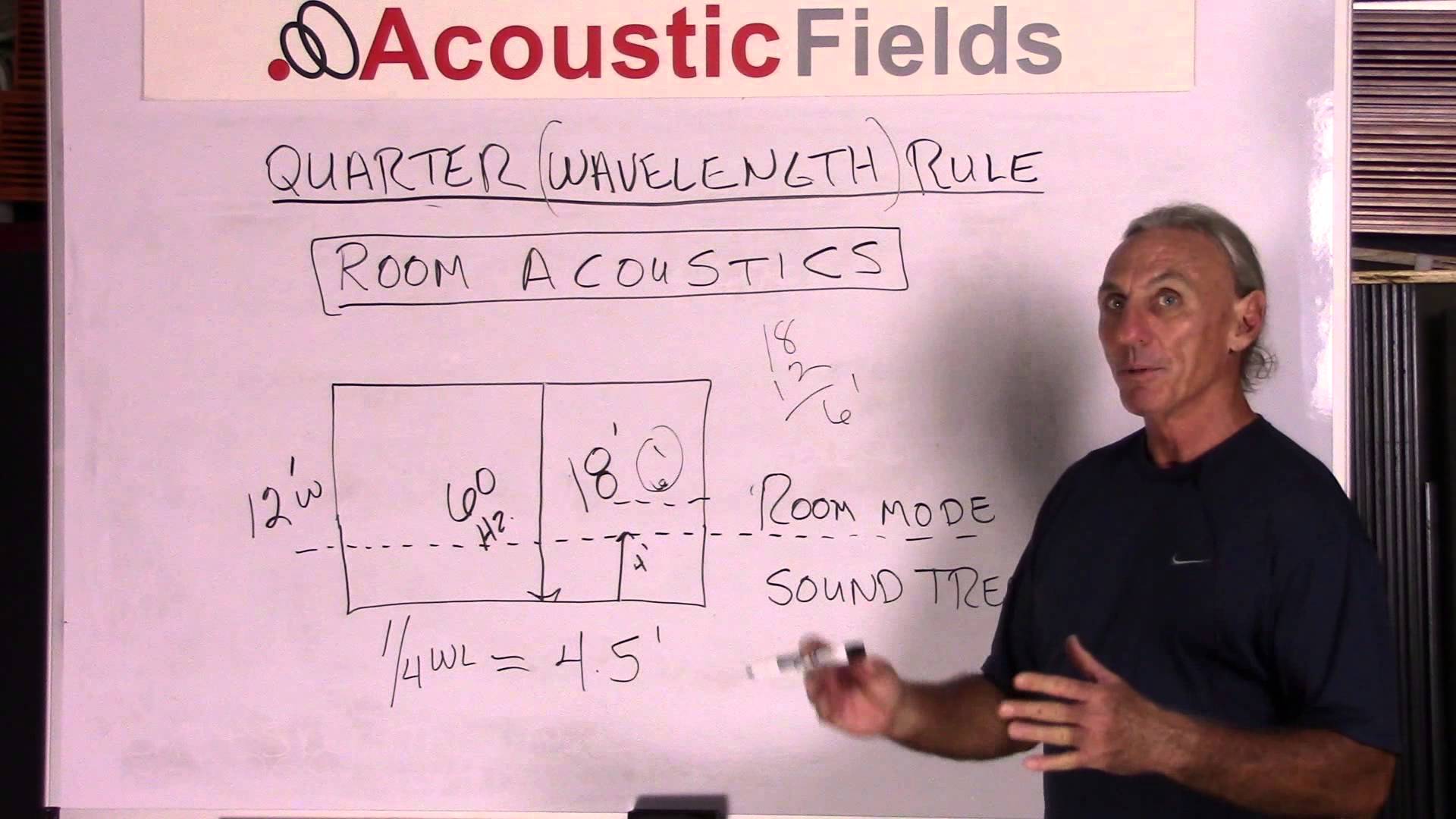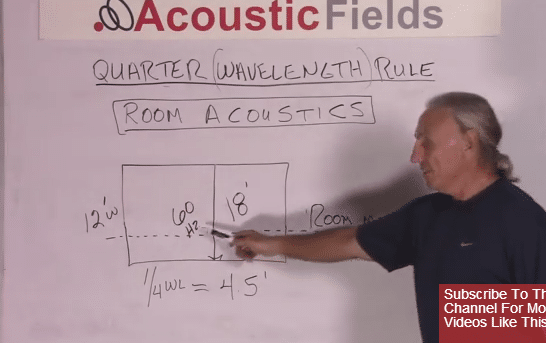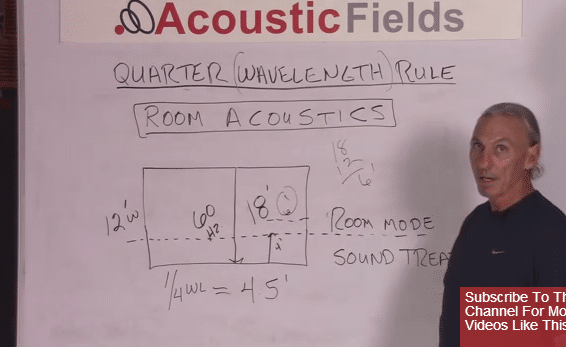Today we’re going to talk about the quarter wavelength rule. You read about this a lot in acoustics. We’re going to look at it in three different areas:
1. We’re going to look at wavelengths and what they actually are,
2. We’re going to get a handle on wavelength and then once we understand wavelength then we can
3. Apply what the quarter means and try to come up with some rules.
The Word Rule Is A Little Misleading
I don’t know where the word rule came from. This is how it’s used in the literature and sometimes the words that are used in a literature are not really descriptive of the process, the theory or the application.
So let’s just walk through some of the things that we do know and I think maybe some of the things that are assumptions and taken for granted, we’ll be able to figure out after we define some terms.
So we’ll look at wavelength, room acoustics and sound absorption. Those three areas and how they pertain to the quarter wavelength rule. So let’s first look at wavelength.
How do we figure out wavelength?
Speed of sound is constant, well relatively so…We’ll do a video and further blog post on that moving through air with different humidities and things like that at a later date.
Sixty cycles are eighteen-foot if we do the math. So we know that our 60 cycle wave is eighteen foot long and that’s really all we have to know for this particular calculation.
So if we take our eighteen foot wave and divide it by four, because what is four? One-fourth is a quarter right? So if we run that calculation, we’re going to get four and a half feet. So if we take our eighteen-foot wave and we cut it up into quarter wavelength sections to illustrate quarter wavelength rule then we have each section at four and a half feet.
Quarter Wavelength Application
A quarter wavelength rule is used mainly in acoustics and sound absorption technology. So let’s use an example of how it fits into acoustics so this will help us through illustration and example, to get some baseline understanding of quarter wavelength.
So we have a room that’s twelve foot wide. We have a sixty cycle wave and we already determined the length of that wave was eighteen feet. Well our room is twelve-foot, okay? So what are we going to do? Well we know that eighteen feet and twelve aren’t compatible. In fact the sixty cycle wave length, for purposes of illustration, is going to strike the wall pictured below and then rebound, okay?
So twelve is not going to fit. We still have eighteen minus twelve, so we still have six feet. So as you see in the image above, it’s going to really come out six feet. It’s not exactly what happens but I think in terms of understanding of how this relates to room acoustics it’ll help.
Endpoint Of The Soundwave
So this is kind of the endpoint of the wave, a quarter wavelength tells us that at the twenty-five percent position of the length of the wave we can have a big impact on the amplitude or strength of the wave by treating those particular positions, because those are the particular positions based on quarter wavelength rule where room treatment is the most effective.
Obviously having room treatment four and a half feet out into the room is not desirable so we use other techniques and technologies but this is kind of the basis, that the room modal pressure is at the quarter wavelength position within the room. Now where is that position? Well that’s the big question and then secondly obviously that position difference between frequency.
So the sound treatment within a room acoustic situation, when applying quarter wavelength rule, is that the twenty-five percent of the wavelength mark inside the room depending on their dimensions.
How Sound Absorption Technology Can Be Applied
Now let’s look at sound absorption technology, what design parameters do we need in our sound absorbing technology knowing that this twenty-five percent of wavelength is really critical, its position within the room. I used to say we need, through absorption, to cut off the head and the tail of the wavelength, to treat it like a snake and the quarter wavelength rule illustrates that to a point. So getting twenty-five percent of that wave through absorption technology should be the goal of any low frequency design, so that we’ll have an impact.
Now how great of an impact can we have on it? Well it depends on your design parameters. The sound absorption technology that you’re using and as you can see, as we work through these examples you can see why we’ve chosen diaphragmatic absorption as our lead process for low frequency sound absorption because of all the technologies, (Helmholtz), Membrane and (Limp Mass) any of those technologies, Diaphragmatic will give you the most absorption in the smallest amount of space.
So when we’re looking at designing for low frequency energy we know that sixty cycles is eighteen foot long, quarter wavelength is our target, so how do we get this four and a half feet of sound absorption in our technology, in our products of today? Well we’ll save that discussion for another video because this centers on a lot of the misconceptions in the room acoustic product industry so we’ll deal with those in a separate video. For now, this video on the diaphragmatic absorption process should help.
But this is something that you have to understand when it comes to quarter wavelength rule that when we design low frequency products we have to keep quarter wavelength rule in mind.
In Summary
So I hope that helps you. If you have any questions at any time I am always on hand to help answer them. Leave them in the comments section or email me at info@acousticfields.com. If you would like to learn more about room acoustics please sign up for my free videos and ebook by joining the mailing list here. I send room tuning tips and things for you to test in your room every Wednesday. They are easy to follow and really help you enjoy more of your music.
Thanks and speak soon
Dennis









